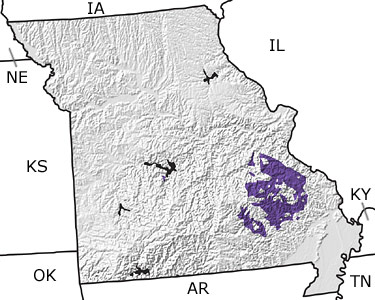Paleontology and geologyDuring the Cambrian, most of Missouri was covered by a vast, warm, shallow sea that extended from Mexico to New York. Only a few land areas remained above sea level, represented by sandstones and shales exposed in the southeastern part of the state. As sea level continued to rise, limestones and dolostones formed from the deposition of limy sediments. These deposits are interbedded with sandy shales, which indicate that sea level fluctuated during this time. Trilobites, brachiopods, and stromatolites are the main fossils preserved in these rocks. Monoplacophorans (cap-shaped molluscs) and small snail-like fossils called Pelagialla have also been found in Missouri's Cambrian rocks. |
|
Research and Collections
Research and Collections
Researchers (showing 1 of 1 listings)
Dr. Thomas W. Kammer: Specialty: Evolutionary paleoecology of Paleozoic crinoids, plus lithostratigraphy, biostratigraphy, and sequence stratigraphy of marine Mississippian rocks in the east-central United States. Field areas include West Virginia, Kentucky, Indiana, Illinois, Missouri, and Iowa.
 Top of List Top of List
|




